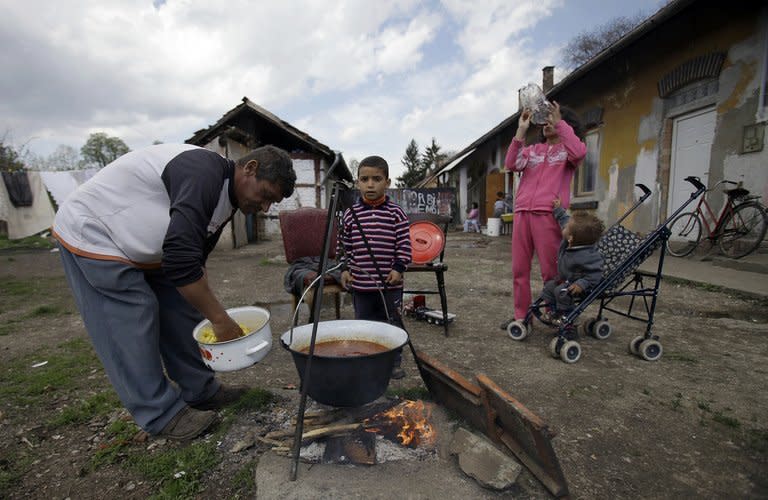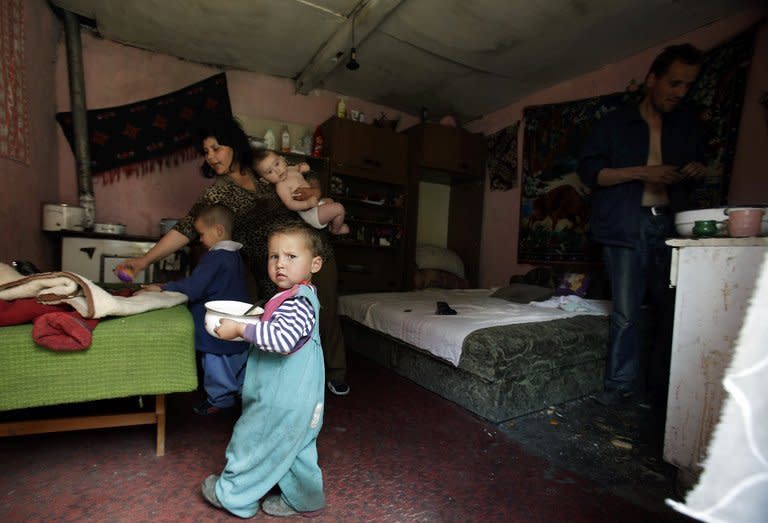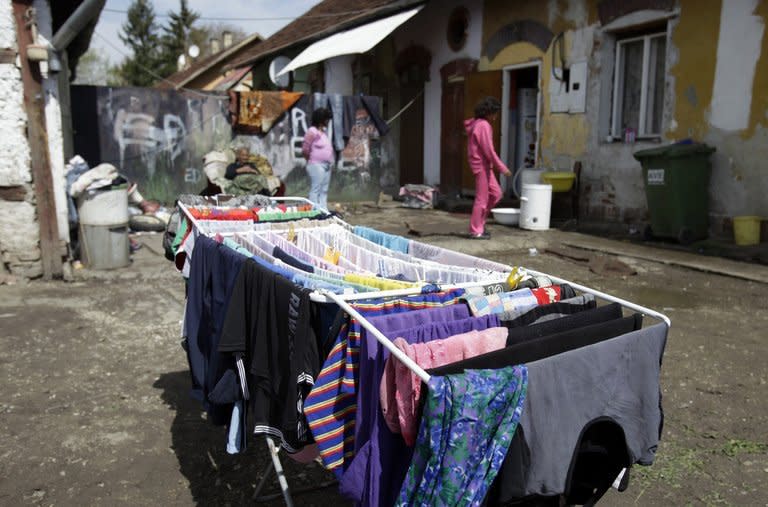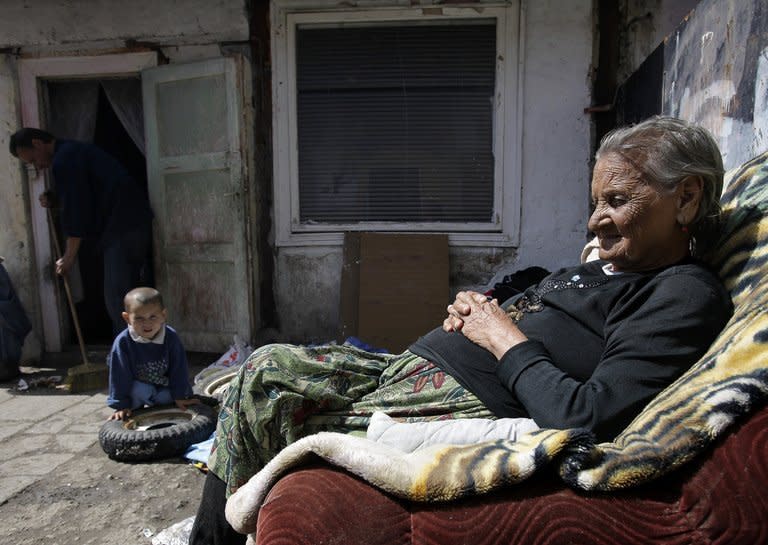Welfare cuts hit the hungry on Hungary's eastern edge
Tucked away on Hungary's eastern fringe, the village of Gemzse lies in one of the European Union's poorest regions. The demise of communism there in 1989 saw factories close and, since then, life has become a struggle for many as no jobs and little opportunity add up to a bleak future. EU statistics show a poverty rate of 13 percent in Hungary, but the figure falls far short of revealing the depths of desperation plaguing some communities. In a 2012 report Hungary's National Health Institute revealed that over 14 percent of Hungarian children suffer from malnutrition. The situation is most alarming in the northeast, where for many families, going hungry is the norm. Nationally, unemployment runs at around 11 percent, but in the northeast it is over 30 percent, and reaches 80 or even 100 percent in the most remote villages, such as Gemzse. After 1989 jobs provided by the state railway company MAV, as well as in local agricultural cooperatives gradually disappeared, while a steel mill in nearby Ozd closed down in the early 1990s with the loss of thousands of jobs. "There is a bit of day labour, especially in the summer in the tobacco fields. So I can earn seven to eight euros ($9-10) per day if there is work. But in winter, there is nothing here," Ferenc Balogh, an ethnic Roma, told AFP in Gemzse. "We live on a family allowance, but it is not enough. So we borrow money from loan sharks. The problem is that when they lend us 10,000 forints (33 euros, $43) we have to repay 20,000. Unfortunately it's our only way to continue living," his wife Erzsebet said. To prevent government welfare benefits being spent in bars, the payments are often issued in the form of vouchers. But not all shops accept the vouchers, and the most deprived -- without cars, or money for public transport to travel to larger towns where the coupons can be spent -- often sell their vouchers, typically at a third of their value, to loan sharks. The gravest consequence of this grinding poverty is that children routinely go hungry The National Food Bank says that without its help 210,000 families in Hungary would struggle to put food on the table, a 30-percent increase from just last year. Since a law passed in 2011, children living in families where the income per household is less than 37,000 forints (130 euros) per month receive free school meals. In Gemzse, the local school, run by the Lutheran church, provides three meals a day to pupils. "In our school, most of the children are from families in a particularly precarious situation -- they have no access to good quality food, or enough food," says Istvan Molnar, a teacher. "We really become aware of this after weekends or holidays, when we see how hungry the children are. During the first lesson, they can't concentrate. They are just waiting for the first break and their first meal of the day," he said. This desperate situation has provoked a wave of street protests across the country. The outcry has targeted deep social welfare cuts, including a drastic reduction in unemployment benefit, made by the conservative government of Prime Minister Viktor Orban. Last month, around 1,000 people took part in a "Hunger March", a two-week-long 300-kilometre trek across the country which culminated in a protest outside the Budapest parliament. "If you are poor, it's as if you don't exist," said Imre Toth, one of the organisers. "The state pretends that everything is just fine. And yet, parts of the east and the south are much worse off than the rest of the country," he said. With cuts to social spending and laws that target the homeless, austerity measures here are hitting people already living in poverty the hardest. But amid a recession which saw the Hungarian economy shrink by 1.7 percent last year and with a national debt at over 80 percent of GDP, the government is looking for savings wherever they can find them -- despite the fact that it is the country's poorest and most vulnerable who suffer the most.





